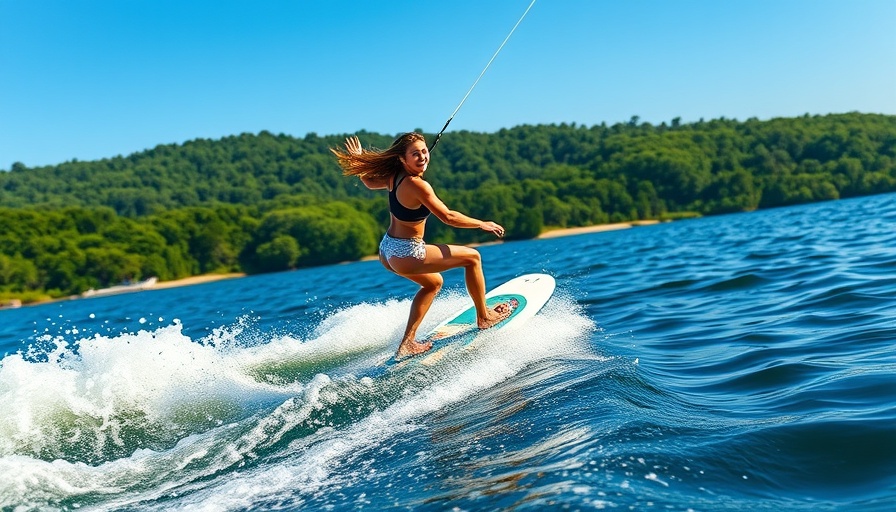
The Wakesurfing Debate: A Reflection on Minnesota's Lake Culture
In the enchanting lakes of Minnesota, summer means more than just warm weather; it means a revival of cherished traditions and outdoor fun. Summer days are incomplete without sound of laughter, splashes, and the echoes of wakesurfing boats creating the perfect waves for countless enthusiasts. However, fresh research from the University of Minnesota is adding a new layer of complexity to this idyllic picture.
Unpacking the Research Findings
According to a recent study, wakesurfing can have unintended consequences, especially when done in shallower lake areas. Researchers, led by Jeff Marr, highlight the potential harm that can occur below the surface, where the effects of wakesurfing can alter water quality and disrupt local ecosystems. This could trigger renewed discussions on the need for uniform regulations surrounding wakesurfing activities in Minnesota.
The Appeal of Wakesurfing: A Closer Look
Wakesurfing has surged in popularity, attracting everyone from kids to grandparents. Unlike traditional waterskiing, where speed can lead to injuries, wakesurfing emphasizes a slower pace, often around 10 to 12 mph, promoting a fun and social atmosphere. Adam Fletcher from Minnesota Inboard Water Sports explains that the sport is accessible, making it ideal for familial bonding. "When you crash going 10 miles an hour, it doesn’t hurt," he states, emphasizing its gentleness compared to other water sports.
The Other Side of the Wave: Environmental Impacts
While many celebrate wakesurfing as a laid-back summer pursuit, critics voice concerns about its environmental consequences. Detractors argue that the waves generated by these specially designed boats can severely erode shorelines and disturb delicate aquatic habitats. The implications in terms of water quality are alarming, with evidence suggesting that wakesurfing in shallow water could be detrimental. It's a classic case of enjoying leisure at the potential cost of our natural resources.
Community Reactions and Future Considerations
This study might just reignite a heated debate on lake regulations and the notion of cherished lake culture in Minnesota. As summer draws people to the shimmering waters, this conversation is crucial. Finding balance between enjoyment and preservation of the lakes’ health may lead to necessary adjustments in how we embrace wakesurfing. As Marr pointedly states, “They know their boat’s producing waves, but it's also having a big impact under the water.”
Moving Forward: A Call for Responsibility
As we bask in summer’s joys, it’s important to cultivate an attitude of mindfulness regarding our ecological footprint. If you’re a wakesurfing aficionado, consider the depths and the effects of your activities on your beloved lakes. Awareness can inspire proactive actions toward protecting these beautiful resources, ensuring they remain a part of Minnesota’s fabric for generations to come.
By embracing responsible practices, we can enjoy our time on the water while maintaining the health of our lakes. So this summer, let’s commit to more than just fun; let’s be stewards of the environment, balancing our recreational joys with respect for nature.
 Add Row
Add Row  Add
Add 




Write A Comment